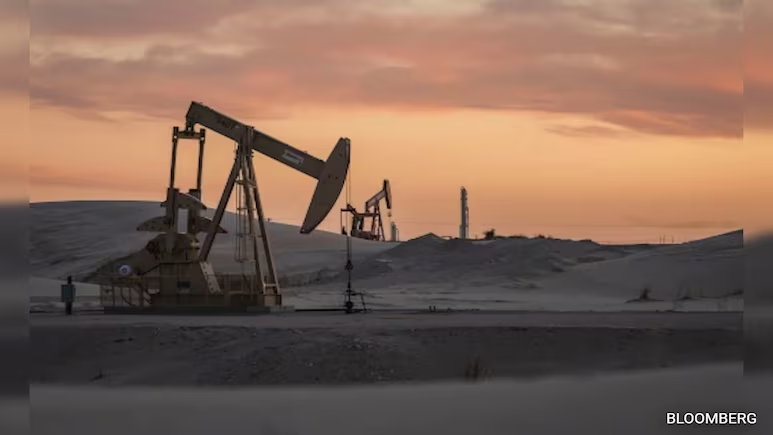The Changing Landscape of Oil Prices Amidst Middle Eastern Turmoil
As conflicts continue to unfold in the Middle East, particularly between Iran and Israel, there has been significant speculation about the implications for global oil markets. Several recent events, including Iran’s missile attacks on a US airbase in Qatar, have caused fluctuations in oil prices that deviate from historical patterns. In the past, military conflicts in the region have almost guaranteed an increase in oil prices, but current market dynamics suggest otherwise.
Javier Blas, a seasoned oil market observer and columnist for Bloomberg Opinion, emphasizes how this time around the actual response of oil prices indicates a new narrative. With the US now standing as the world’s leading oil producer, the dynamics of international oil trade have fundamentally changed, leading to a scenario where the traditional fears of supply disruptions no longer hold the same weight. This article delves into the nuances of what these conflicts mean for global oil markets and how they deviate from previous expectations.
Who, What, Where, When, Why, and How: Understanding the Current Context
In this complex web of international relations, the key players include the United States, Iran, and Israel, with implications echoing across the globe. The recent attacks by Iran on US interests, which occurred over the weekend, targeted a US airbase in Qatar, marking a significant escalation in tensions. Contrary to expectations, oil prices did not surge; instead, they declined, with Brent crude futures dipping below $70 per barrel following the Iranian missile strikes.
Traditionally, such hostilities in the Middle East would instigate concerns about potential supply interruptions, usually resulting in skyrocketing oil prices. However, industry experts like Blas highlight that this time, the market is reacting differently. There are two primary factors contributing to this trend: firstly, a learned approach in oil markets that has become skeptical of immediate price hikes due to supply fears, and secondly, the United States’ growing independence from Middle Eastern oil as a result of the shale revolution.
The Shale Revolution: A Shift in Power Dynamics
Over the past two decades, the US has transformed its oil production capabilities dramatically, increasing output from about 7.5 million barrels a day to an astonishing 21 million barrels a day. This shift is largely attributed to innovations in hydraulic fracturing, commonly known as fracking, which have allowed the US to tap into previously inaccessible shale oil reserves. This abundance has positioned the US not only as a significant oil producer but also as a game-changer in international oil economics.
Blas points out that the reduced dependency on Middle Eastern oil alters traders’ perceptions and consequent risk assessments when geopolitical tensions flare. “Traders feel that they don’t need to put as much price risk for a potential disruption,” he explains. This evolution in the energy landscape signifies a departure from the past, where conflict in the region automatically translated into higher oil prices.
Wider Implications of Oil Price Fluctuations
With the current price of oil hovering at $75 a barrel, many analysts believe that this level is manageable for both the US economy and global markets. Lower oil prices have meant more stability across several sectors in the United States and beyond. Historical precedents, such as the spike in gas prices following the Russian invasion of Ukraine, serve as stark contrasts to the current situation. Comparatively, US gas prices are lower now than during previous international crises, further reinforcing the notion that the US is less vulnerable to Middle Eastern disruptions.
As these dynamics play out, a new question emerges: what does Iran stand to gain from potential escalation, such as the closing of the Strait of Hormuz, a crucial chokepoint through which 20% of the world’s oil supply passes? While Iran possesses the capability to disrupt this vital waterway, doing so would not only harm international trade but also cut Iran off from exporting its own oil, a critical revenue source.
Strategic Considerations and the Path Forward
The evolving landscape has profound implications for US foreign policy and energy strategy. Historically, American presidents have been mindful of how military interventions in the Middle East affect domestic oil prices and, by extension, the economic health of the United States. The complexities of these conversations have evolved, allowing current leaders like President Trump to consider military action without the immediate fear of spiraling oil prices that could lead to domestic economic distress.
However, the geopolitical ramifications of ongoing conflicts in the Middle East should not be underestimated. While prices might not skyrocket in response to military actions, there remain legitimate risks, particularly concerning vulnerable oil infrastructure in the region. Blas warns that while the Strait of Hormuz may not present the most immediate concern, the threats to Saudi oil fields from Iranian proxies could lead to serious supply disruptions.
As these discussions continue, it would be prudent to keep tabs on the evolving capabilities of US shale production as well. If oil prices remain stable, production may increase, ensuring that the US retains its dominant position in global oil markets. Conversely, should disruptions begin to affect supply, international dynamics would shift drastically, reigniting concerns of market volatility.
In summary, while the current Middle Eastern conflicts evoke concerns about oil supply, the modern oil landscape is shaped by a myriad of complex factors that mitigate traditional fears. As new players emerge and historical patterns are reexamined, the global economy must adapt to the realities of an evolving energy paradigm, one that may not pivot on the crises of the past but rather embrace innovative models of resilience and production.
DISCLAIMER
We have taken every measure to ensure that the information in this article and on our social media platforms is accurate, verified, and obtained from reliable sources. For feedback or complaints, please contact us at info@hamslive.com.


